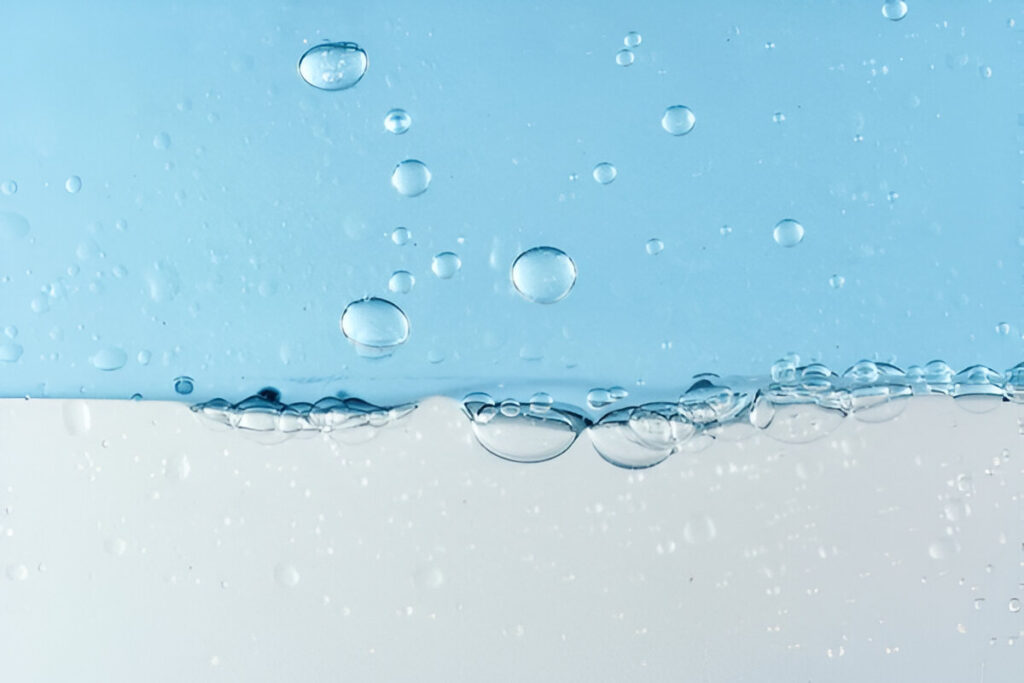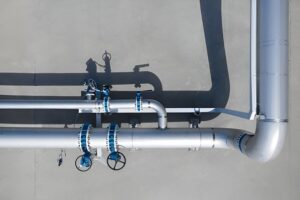
Have you ever wondered how industries handle oil-contaminated water without harming the environment? Are you curious about the importance of oil water separators and why so many businesses are installing them? If you’re looking for a clear, friendly explanation of these systems—from what they are to how they work—you’re in the right place.
In this blog post, we’ll look at everything you need to know about oil water separators. We’ll explore different types, discuss how they help industries save money, and uncover the vital environmental regulations in Australia. Plus, we’ll address frequently asked questions that people often have about this technology.
By the end, you’ll have a thorough understanding of oil and water separators and how they can shape your facility’s future. Whether you run a manufacturing plant or a council project, there’s plenty here to guide you and ensure you make the best decisions for your site. Let’s get started!
Introduction to Oil Water Separation
Oil water separation is all about removing oil, grease, and other contaminants from water so the water itself can be discharged responsibly. This is a critical process in many Australian industries that generate oily wastewater—think factories, workshops, and even local councils handling stormwater. When done properly, oil water separation helps avoid pollution and keeps your operations running smoothly.
An oil and water separator is a device specifically designed to separate oil from water before the water is either reused or discharged. These separators make use of gravity, coalescing filters, or spinning processes to ensure that oils float to the top or collect in a specific area for safe removal. The remaining water is typically much cleaner and can often be discharged in compliance with local authority rules.
Effective separation is vital because even small amounts of oil can be harmful to waterways. Large volumes of oily wastewater can wreak havoc on local ecosystems, put your business at legal risk, and result in steep fines. By separating these contaminants, you minimise environmental harm and demonstrate your commitment to responsible operations.
Types of Oil Water Separators
Much like choosing the right tool for a job, selecting the right oil water separator depends on your facility’s needs. There are several technologies available, each suited to different scenarios and flow rates.
- Gravity Oil Separator: The simplest type, gravity separators rely on the difference in density between oil and water. Oil floats to the surface while water stays below, allowing the separated oil to be skimmed off.
- Coalescing Oil Separator: This method uses coalescing media to encourage oil droplets to form bigger droplets, which are easier to separate. It’s often used in industrial environments where contaminants need to be efficiently removed at moderate flow rates.
- Spinning (Centrifugal) Oil Separator: A spinning separator, also called a centrifugal separator, uses rapid rotation to force denser fluids to the outside, leaving the lighter oil at the centre. This is especially useful for handling heavier concentrations of solids along with oil.
- Automatic Oil Water Separator Systems: These advanced systems detect oil build-up and automatically remove it without constant supervision. They’re ideal if you need continuous operation with minimal manual intervention.
Each type has its strengths and limitations. If you deal with large volumes of oily wastewater, a robust, automatic system may be your best option. On the other hand, smaller operations can often manage with a simple gravity separator.

Benefits of Industrial Oil Separators
When it comes to benefits of industrial oil separators, some advantages are immediately clear, while others might surprise you. For instance, these devices don’t just protect the environment—they can also protect your bottom line.
Firstly, oil separators benefit industries ranging from manufacturing to mining because they keep wastewater discharge within regulated limits. That means fewer fines, fewer shutdowns, and a smoother path to compliance. Secondly, by separating oil efficiently, you reduce waste disposal costs. Instead of paying for handling large volumes of oily sludge, you only remove the concentrated oil, which lowers disposal fees.
Another big point is workplace safety. Spilled oil is not only harmful to the environment but also poses slip hazards in busy industrial environments. With proper containment and removal through an oil and water separator, you minimise the risk of accidents. Additionally, adopting these systems shows that you value both local regulations and employee well-being. Ultimately, using the right oil water separator will improve your facility’s credibility, reduce costs, and help maintain a safer workspace.
How Does an Oil Water Separator Work
Although there are different technologies on the market, all oil water separators share a core principle: separate the less dense fluid (oil) from the denser fluid (water). The process typically involves guiding wastewater into the separator, allowing time for the oil to rise to the surface, and then removing the oil for disposal or recycling.
Key Components & Basic Principles
Most separators include an inlet section where water flows in, a separation chamber where oil is collected, and an outlet for the treated water. A skimmer or similar mechanism often helps remove oil once it’s floating on top. Filters or coalescing packs may also be present to improve efficiency by attracting smaller oil droplets and merging them into larger droplets.
Typical Separation Process
In a typical system, oily water enters a chamber at a controlled flow rate, preventing turbulence that might re-mix the oil and water. The oil then floats to the surface, often helped by coalescing materials if present. Next, a collection mechanism removes the oil. Some advanced designs include sensors that detect oil levels and trigger automatic evacuation. The treated water passes through an outlet, ready for further filtration or discharge.
Common Challenges & How to Overcome Them
Challenges such as high flow rates, emulsified oils, or the presence of solids can reduce efficiency. You can overcome these by sizing your unit correctly, using specialty filters, or adding chemical treatments to break down emulsions. Regular cleaning ensures the separator doesn’t become clogged, helping everything run without a hitch.
Oil Water Separator Sizing
Correct oil water separator sizing is essential for effective separation, compliance with regulations, and overall cost control. Under-sizing a separator leads to poor performance and potential legal issues, while over-sizing can result in unnecessary capital expenditure.
If your separator is too small for the volume of wastewater, the system becomes overwhelmed. Oil won’t have enough time to separate, risking non-compliance with discharge limits. On the flip side, a separator that’s too large might be more costly to install and maintain without offering real advantages.
Several factors affect sizing, including the volume of water, the type and amount of oil present, and the allowable discharge limits in your area. Flow rate is especially crucial—peak flow rate determines how quickly the wastewater enters the separator. Temperature can also make a difference since warmer water can thin the oil, making it easier to separate, whereas cooler conditions might slow the process.
To roughly size your system, calculate your facility’s maximum flow rate in litres per hour. Consider surges in production or stormwater inflows that might change this rate. Industry guidelines in Australia often specify required retention time and separator chamber dimensions for different flow categories. Consulting a specialist is a wise move if your site has complex oil profiles or experiences highly variable flow rates.
Oil Separator vs. Oil Water Separator
When you hear “oil separator” and “oil water separator,” you might think they’re the same. In many contexts, people use these terms interchangeably. However, there can be subtle distinctions.
An oil separator is a more general term that sometimes refers to a device capturing oil from compressed air or coolant in machinery. An oil water separator, specifically, is designed to handle oily water, usually in industrial or wastewater settings. Both separate oil from a substance, but their applications vary.
If you deal primarily with wastewater that’s contaminated by oil, an oil water separator is your best bet. For mechanical systems where oil is mixed with refrigerant or compressed air, an oil separator might be more appropriate. You’ll want to identify exactly what kind of fluid you need to treat before settling on the solution.
Installation Considerations & Best Practices
Installing an oil and water separator isn’t rocket science, but it does require proper planning. A thorough site assessment is the first step. Look at the size and nature of your wastewater streams and consider where you want to place your separator. This could be indoors or outdoors, depending on available space, ease of access, and safety regulations.
Ensure you measure your drainage layout and check for any risk of flooding or high groundwater. If you’re installing outdoors, confirm the base is level and sturdy. You might need to construct a concrete pad or similar foundation that can handle the unit’s weight when it’s full of water.
Safety and environmental agencies in Australia may require a specific installation standard. For large industrial facilities, you might need approval from local councils before discharging water. By following best practices and securing the right permits, you’ll minimise potential legal hurdles down the road.
Maintaining & Servicing Your Oil Water Separator
Like any piece of equipment, an oil water separator demands routine care. A small amount of regular maintenance can significantly extend the life of your system and preserve separation efficiency.
Check your separator at scheduled intervals to see if oil and sludge levels are within acceptable limits. Clean any filters or coalescing packs if they’re getting clogged. If you neglect maintenance, oils can build up and lower the water quality at the outlet.
A simple toolkit—spanners, replacement gaskets, and cleaning brushes—can handle most day-to-day tasks. A portable skimmer can help remove floating oil in smaller separators. When performing a deeper clean, always follow the manufacturer’s instructions, and wear proper safety gear.
Conclusion
Do oil water separators sound complicated? They don’t have to be. The bottom line is that these systems are vital for protecting our environment, cutting down on operational costs, and staying on the right side of Australian regulations. Whether you’re a facility manager or a business owner, adding or upgrading an oil water separator can make a huge difference to your bottom line and your peace of mind.
When you’ve got a well-sized, well-maintained system in place, you reduce the likelihood of unexpected downtime and expensive fines. You also show your employees and local community that you’re invested in safety and environmental stewardship. It’s a real win-win situation—boosting both sustainability and business credibility.
Ultimately, picking the right oil separator starts with understanding your site’s specific needs. If you’re still unsure, don’t hesitate to talk to industry experts or reach out to local environmental authorities. Make sure to stay informed about evolving regulations and emerging technologies. That way, you’ll be prepared to tackle future challenges, keep costs in check, and maintain a strong, responsible business for years to come.


